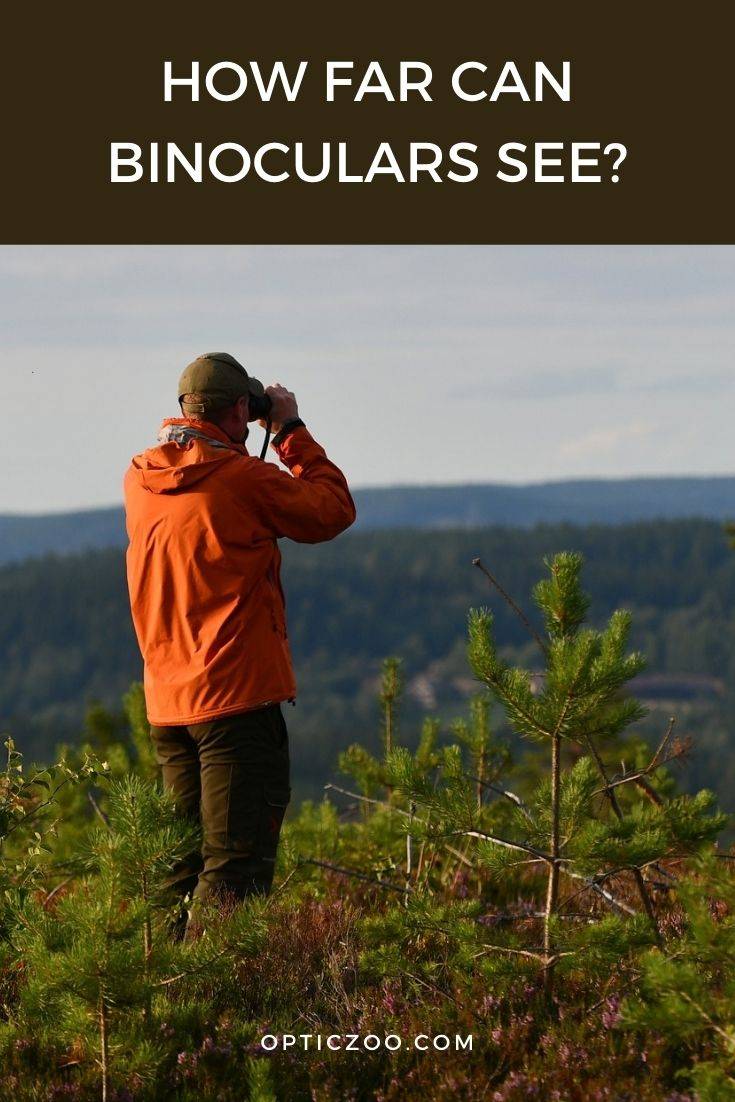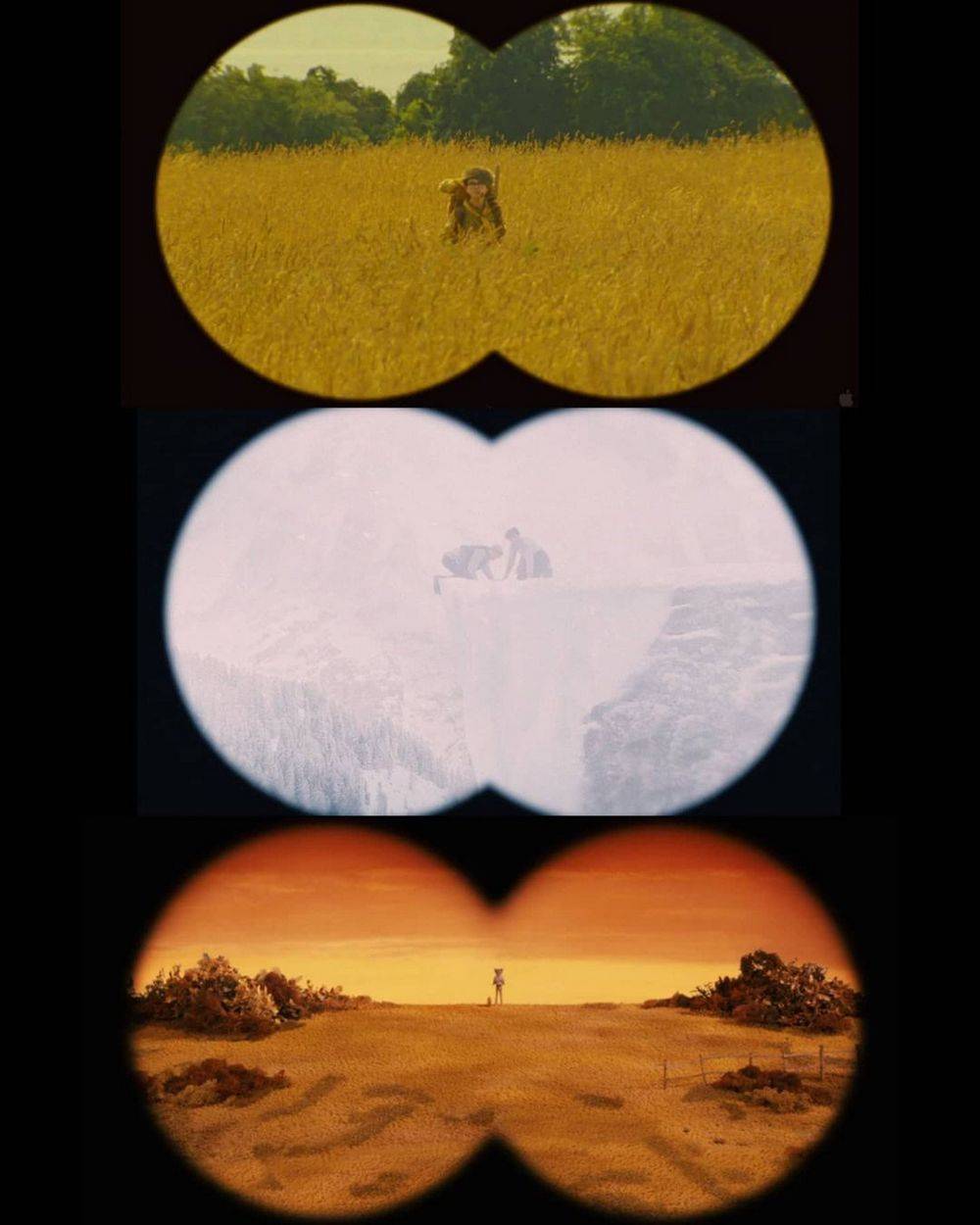 People want to go faster, fly higher, know more about the world, and see further!
People want to go faster, fly higher, know more about the world, and see further!
A variety of optical instruments – telescopes, and, perhaps, the most charismatic and popular of them – binoculars, have served the last aspiration for four hundred years.
A good binocular is one that you don’t think about during observations, and all your thoughts are focused only on the object you are viewing.
Magnification and Lens
When choosing anything, you have to check the characteristics. If we talk about binoculars, the key features you should pay attention to are the magnification and diameter of the objective.
Most binoculars have a fixed magnification, but recently, binoculars with zoom, that is, variable magnification, have become widespread.

Via: @leica_natura
At first glance, all the advantages are on their side – versatility and ease of adjustment. But in practice, zoom binoculars are noticeably inferior in image quality to models with a fixed magnification.
This is especially true of the budget segment, where complex optics of zoom binoculars in a low price range a priori cannot be performed at a decent level.
[wpsm_box type=”info” float=”none” text_align=”left”]
It is mainly the image quality at the edge of the field of view and the brightness of the picture that suffers.
[/wpsm_box]
But in some cases, when observing from long distances, for example, the implementation of construction work or the protection of territories, when both a general panorama and a close-up are needed, such models may come in handy.
- Devices with low magnification (up to 5x) are usually theater or children’s binoculars. Wide-angle optics that fully reveal their capabilities when observing at short distances – up to 50 meters. Users see a wide area of space, such as a stage in a theater, circus, or concert. It is impractical to use these optics in an open space, for example, in nature or in a mountainous area, since an approximation of 5 times is not enough to appreciate all the delights and beauty of the mountain landscape.
- Binoculars with a magnification of 5x to 10x are the most common type of optical devices, which are very popular among fishermen and hunters, tourists and lovers of active recreation in the bosom of nature. Optical magnification up to 10x is the optimal magnification for handheld observation, as the weight of such devices is small, which does not cause stress and fatigue. This multiplicity is quite enough to observe what is happening at distances of up to 1 kilometer. In addition, optics with a magnification of up to 10 times are also quite often wide-angle. This means that you will not only be able to see a large area in front of the lying space but will also be able to quickly find the desired object, as well as quite easily track moving targets.
- Binoculars with a magnification of more than 10x are devices that fall under the classification of powerful optics, which will open up completely new possibilities for observers. With optical magnification, for example, 20, craters on our satellite Moon can already be examined in detail. However, it should be understood that for comfortable observation at this magnification, you will need a tripod.
What Are the Main Lens Sizes and How Do They Influence Image Quality?
[wpsm_box type=”info” float=”none” text_align=”left”]
Size also matters. The lens “draws” the image, and in order to show enough detail with good brightness, it must have a decent diameter.
[/wpsm_box]
Let’s consider the main standard sizes:
- 25mm – with such diameter binoculars can show close objects well in the daytime; at twilight, or at night this aperture is no longer enough. But its main advantage will be its amazing compactness. Such models are suitable for both a child and an ultralight tourist, due to their small size and weight.
- 30-40mm is a good lens size for portable field and touring binoculars; it allows you to confidently observe during the day and view key objects at dusk. At the same time, models with a 40mm lens of all types remain quite compact and very convenient for handheld observation. These binoculars are versatile and suitable for both the tourist and the hunter.
- 50-60mm – with such diameter binoculars have quite outstanding characteristics, but this size is already the limit for handheld observation. A high-quality 50-60mm lens, even in cloudy weather, builds bright and saturated images, and at dusk, it allows you not to lose sight of the key details of the observed object. Due to the perceptible dimensions and weight over a kilogram, long-term observations with instruments such as the Delta Optical 7×50 ED Extreme are best done with a tripod. 7×50 is one of the classic sizes of binoculars and can be used by everyone, from astronomers to teenagers, but most often they end up in the hands of hunters, onboard ships, or as a universal tool for people who do not use binoculars very often, but who want to have the high-quality optical device. Tourists should be careful when choosing binoculars of this size and be sure to pay attention to the weight of the device.
- 70mm and more – binoculars of this size are already real giants. The lens diameter of these models can go up to 150mm and even more, competing in penetration capabilities with many telescopes. Models with this diameter are often used for survey observations by mariners and the military. Such binoculars are very popular among astronomy lovers because watching the starry sky with two eyes is much more pleasant. The weight and dimensions of these products completely exclude hand-held observation and require installation on a photo tripod or a special mount. In most cases, models with a diameter of 70-100mm become frequently used – Delta Optical SkyGuide 15×70 and Delta Optical 25×100. They are still quite affordable, but at the same time, they can give a lot of vivid impressions from viewing the stellar deposits of the Milky Way and large nebulae.
Closer and Darker or Exit Pupil Settings
In pursuit of high magnification, many users forget about such an important parameter as the exit pupil diameter. In simple terms, it is the diameter of the light flux that exits the eyepiece towards the observer’s eye.
[wpsm_box type=”info” float=”none” text_align=”left”]
It is very simple to calculate it; you need to divide the diameter of the objective in millimeters by the magnification of the binoculars, for example, for 10×50 binoculars the exit pupil will have a size of 50/10 = 5mm.
[/wpsm_box]
The larger the exit pupil, the more light will hit the lens of the eye. In the daytime, the human pupil narrows to 2-4mm, but with the advent of dusk and night, it can expand to 6-8mm.
If for observations on a clear, fine day, the exit pupil of 5 mm may even be too much, because part of the light will be cut off by the eye pupil, then more will be needed at night.
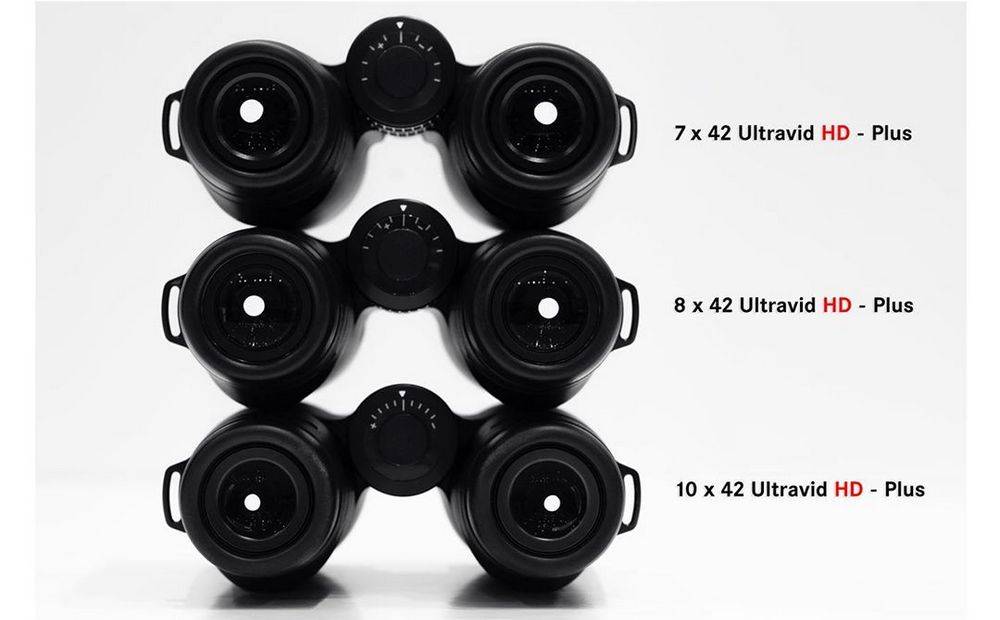
Via: @leicastorebellevue
Keep this in mind if you are planning to purchase binoculars for viewing in low light conditions, at dusk and especially at night.
In pursuit of 20x magnification, you can get as little as 2.5mm exit pupil from 50mm binoculars, and it won’t be enough to see a clear and crisp picture.
If a high magnification is vital, you need to increase the diameter of the objective in order to keep the exit pupil of the binoculars within 4-7mm.
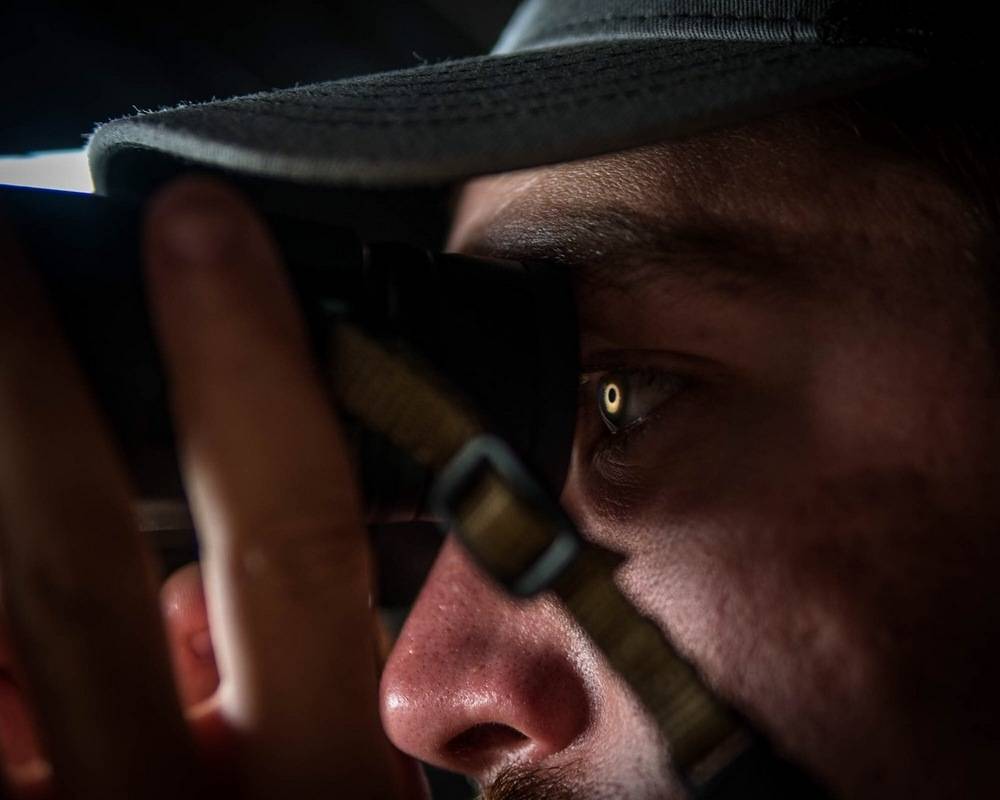
Via: @rhuttonjr
Another important characteristic of binoculars is their field of view, which is usually indicated in degrees and linear values from a certain distance. In the latter case, it could be 110m at 1000m, or 372 feet at 1000 yards.
All other things being equal, the field of view depends on the design of the binocular eyepieces. Quality models are equipped with wide-angle eyepieces that provide comfortable eye relief and a wide field of view.
[wpsm_box type=”warning” float=”none” text_align=”left”]
Many ultra-wide-angle eyepieces with unusually large fields often show distortion at the edge of the field of view. This is due to the imperfect design of the eyepiece.
[/wpsm_box]
Wrapping Systems
- Galileo system. This optical design does not contain wrapping elements and, thanks to the design of the lens and eyepiece, builds a direct image by itself. But the image quality of the binoculars of Galileo’s scheme is not particularly high. In addition, it deteriorates greatly as the diameter of the binocular lens increases. Therefore, such a system received its distribution only in small theaters and children’s binoculars. For such an application, it is quite suitable.
- Porro-prism. The Porro prism wrapping system is the classic and most popular one. It achieves high light transmission and wide viewing angles. Binocular lenses, as usual, are spaced apart and are not on the same optical axis with the eyepieces. Despite the fact that the dimensions of the binoculars due to this slight increase in comparison with the Roof construction, Porro binoculars allow you to achieve a stereo effect and provide a three-dimensional image. In compact models, the so-called reverse Porro system is sometimes used, when the eyepieces are spaced wider than the objectives. Here it allows realizing a small diameter of the lenses themselves. In this case, of course, you will not be able to achieve a special stereo effect.
- Roof-prism. In binoculars for tourists, hunters, and fishermen, a design based on Roof-prisms has become widespread. It allows, with the same characteristics as Porro’s, to achieve significantly smaller dimensions and simplifies the process of sealing the binoculars.
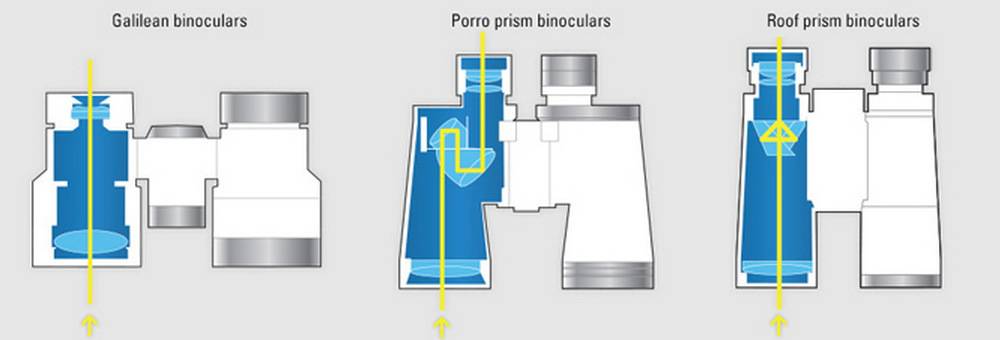
Bird watchers and wildlife observers are great connoisseurs of quality binoculars. Their definite preference is, as a rule, classic 50mm binoculars with really high-quality optics.
But there are exceptions; for observing distant objects, larger models with a larger lens are also suitable. In this case, you need to take care of a photo tripod for comfortable viewing.
